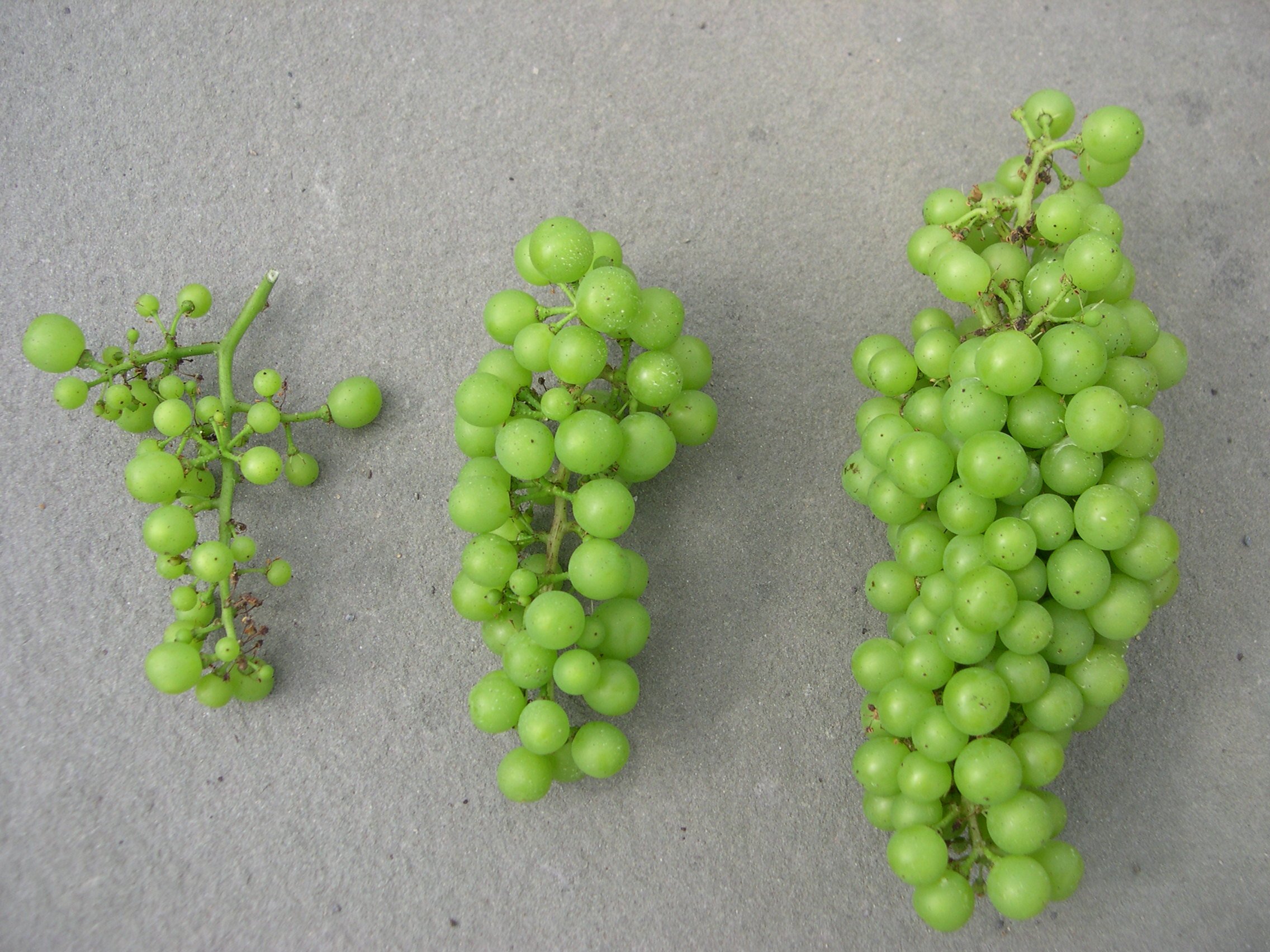Journal | June 4, 2024
(Chardonnay clusters from a previous vintage) The cluster on the left is an example of poor pollination. This scraggly cluster will contribute to small yields. The cluster in the middle is the Goldilocks cluster: just right. Once the berries become full sized, the cluster on the right will be tight as a drum and susceptible to rot. If one berries rots, the rot will spread throughout the cluster. This is an example of “too successful” pollination.]
Bloom Update
Weather conditions for bloom have been variable. Last week when Chardonnay was in full bloom we experienced rain, fog, cool nights and some occasional sun. This may prove to be problematic.
On the bright side, this week and next look close to ideal for Cabernet Sauvignon, the last variety to bloom. Warmer, drier days should make for a successful pollination. We are looking for a fast flowering, meaning that all the flowers bloom, pollinate and fertilize quickly and evenly. Synchronicity will contribute to a more even ripening in the fall. This is especially critical for red winegrapes as uniform ripening is one of the keys to supple, high quality tannins.
We’ll have a good sense of how fertilization went in about ten days. This is when the tiny berries begin to form. Or not. “Shatter” is the winegrowing term describing the period when some berries stop developing and fall off the cluster. While some of this is normal, a lot of this is a problem.
Linden Vineyards / Learn More / Latest at Linden | Hardscrabble Journal: June 4, 2024

